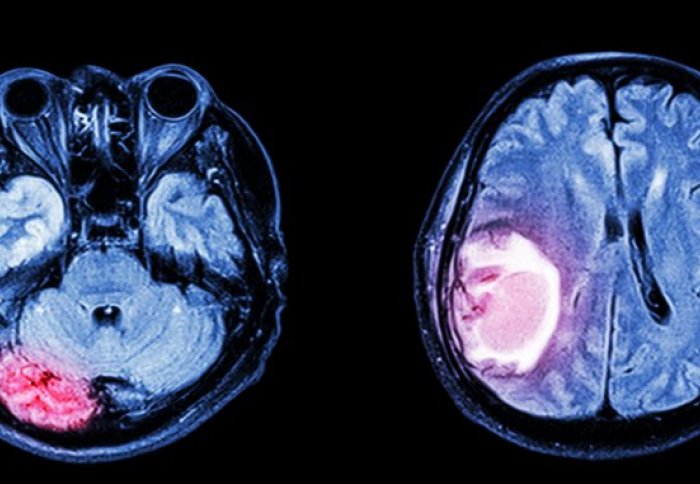

Scientists have developed a new technique that shows promise as a non-invasive approach to deep brain stimulation.
We think this technique has a lot of potential - the Temporal Interference method uses electrical fields that are well understood, and patients wouldn’t need to undergo chemical or genetic manipulation in the brain
– Dr Nir Grossman
Centre for Bioinspired Technology in the Department of Electrical and Electronic Engineering and the
Deep Brain Stimulation (DBS) currently involves cutting open a person’s skull and inserting electrodes inside the brain to reduce physical symptoms, such as shaking. It is often the last option for people such as those with Parkinson’s disease who have very serious symptoms that cannot be controlled through medication alone.
Now a team at the Massachusetts Institute of Technology (MIT), including a neuroengineer at Imperial College London, have developed a DBS method that involves placing electrodes on the scalp, rather than inside the brain. The method is called Temporal Interference (TI) stimulation.
The team have used TI stimulation on mouse models and demonstrated that they can non-invasively activate neurons in the hippocampus - a region deep in the brain that is central to memory and cognition. The advantage of TI stimulation is that it is precise, only exciting the targeted neurons. By comparison the standard non-invasive brain stimulation approach excites both the targeted neurons, and also neurons closer to the surface.
Standard DBS requires the surgeon to manually move the electrodes to different regions of the brain to administer the therapy. By contrast, the TI simulation can be steered in a lateral direction by simply changing the ratios of the currents. The team demonstrated the effectiveness of this steering mechanism by activating different parts of the mouse model associated with paw and whisker movements.
Many patients with neurological disorders cannot use deep brain stimulation methods due to the high-risk nature of the procedure.
– Dr Grossman
The researchers caution that their work is still in its early stages and that it will take years of work before it could be used in clinical trials with patients. However, the team say their work shows promise as a new type of non-invasive method for DBS, which could ultimately enable DBS to be used more widely. They are interested in whether such a technique could be used to treat neurological conditions such as Alzheimer’s disease, where neurons in the hippocampus have degenerated.
The lead author of the paper is Dr Nir Grossman, who was a Wellcome Trust-MIT Fellow at the Massachusetts Institute of Technology. He is now at the Centre for Bioinspired Technology of the Department of Electrical and Electronic Engineering at Imperial College London.
Dr Grossman said: “Many patients with neurological disorders cannot use deep brain stimulation methods due to the high-risk nature of the procedure. We need to do more work before we can trial this technique in patients, but if that work is successful, it would be great to explore whether deep brain simulation might have uses for conditions like Alzheimer’s where the treatment options are really limited.
“We think this technique has a lot of potential - the Temporal Interference method uses electrical fields that are well understood, and patients wouldn’t need to undergo chemical or genetic manipulation in the brain,” added Dr Grossman, who is now continuing this work at Imperial.
In healthy people, neurons communicate via electrical signals. However, in patients with brain disorders, their neurons have abnormal electrical activity. For example, in Parkinson’s disease, the electrical signals in a network of neurons involved in the coordination of muscle movement are over synchronised. This leads to tremors. To counteract this, conventional DBS involves inserting electrodes into the neural network, where electrical currents are emitted to reduce tremors.
The research
The new TI method developed by the team in today’s study, which is published in Cell involves placing two pairs of electrodes on the scalp, from where two electrical currents are applied to the brain.
Both currents oscillate at frequencies that are too fast for the neurons to follow. However, at the intersection where these two currents meet the amplitude of the combined currents oscillates at a slower frequency that the neurons can follow. The slowly oscillating TI stimulation is the point at where the DBS occurs.
In the case of the mouse model, the team were able to localize the slowly oscillating TI stimulation in the hippocampus while exposing the overlaying brain regions to the fast oscillating currents that passed through the tissue without affecting it.
The researchers say the next step will see them improving the range, depth and precision at which the slowly oscillating envelope can penetrate the deeper parts of the brain. This will be done by increasing the number of electrodes that can be placed on the skull and further experimentation with, and fine tuning of, the frequencies of the electrical field.
One of the main aims is for the electrical field to reach the subthalamic nucleus deep in the brain, which is involved in motor control. Currently, clinics around the world are targeting this region with implantable DBS devices to treat Parkinson’s disease. By developing a non-invasive alternative, the TI method may transform the risk-benefit profile of such a treatment.
Article text (excluding photos or graphics) available under an Attribution-NonCommercial-ShareAlike Creative Commons license.
Photos and graphics subject to third party copyright used with permission or © Imperial College London.
Reporter
Colin Smith
Communications and Public Affairs

Contact details
Email: press.office@imperial.ac.uk
Show all stories by this author




Leave a comment
Your comment may be published, displaying your name as you provide it, unless you request otherwise. Your contact details will never be published.